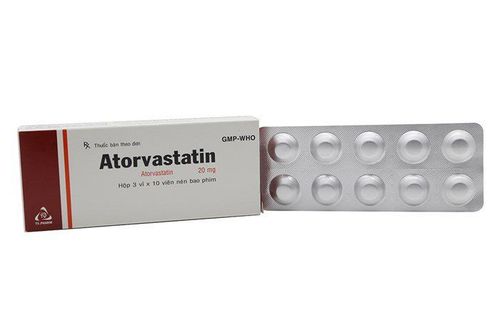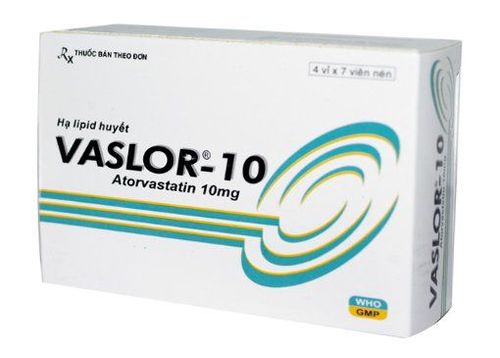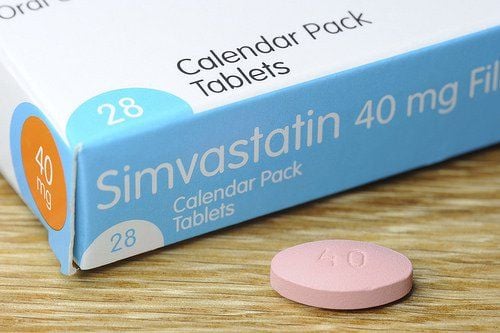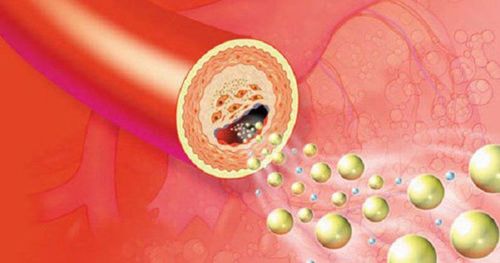This is an automatically translated article.
The article is professionally consulted by Master, Doctor Nguyen Thi Ngoc - General Internal Medicine - Endocrinology - Department of Examination & Internal Medicine - Vinmec Central Park International General HospitalDyslipidemia is one of the important risk factors for cardiovascular diseases. However, unlike age and gender, this is a completely modifiable risk factor. Knowing the causes of dyslipidemia to prevent and correct is a way to prevent disease, ensure quality of life and prolong life in the future.
1. Primary dyslipidemia
Genetic factors play an important role in causing primary dyslipidemia, including:
Combined familial hyperlipidemia; Mutations in a group of LDL lipoproteins; Familial hypertriglyceridemia; Homozygous or polygenic familial hyperlipidemia - a mutation in the LDL receptor. Patients with primary dyslipidemia account for a very small proportion in the community, often detected before adolescence, in families with many people with the disease at the same time. This is a factor that causes many serious cardiovascular diseases very early, life expectancy is limited.
2. Secondary dyslipidemia
Secondary dyslipidemia is caused by lifestyle factors or medical conditions that affect blood lipid levels. This is the most common form in life, the rate is increasing gradually and becoming younger.
2.1. Unhealthy diet The way to synthesize fats in the blood 1/4 originates from the diet. Therefore, this is the leading factor leading to hyperlipidemia. In particular, eating a lot of saturated fats such as fat, animal organs and trans fats found in some cookies and baked goods can significantly increase blood cholesterol levels. Foods high in cholesterol, such as red meat and full-fat dairy products, will also raise total cholesterol.
Therefore, the implementation of a blood lipid control diet is a prerequisite for reducing blood fat. Specifically, reducing the consumption of unhealthy fats, such as those found in red meat, full-fat dairy products, animal organs, scrambled eggs, seafood,... Supplementing with green vegetables, Cereals and fruits in the daily diet not only help lower blood fat but also prevent cardiovascular diseases.

Chất béo bão hòa làm tăng rối loạn lipid máu
2.2. Overweight - obesity There have been many studies proving that people with a body mass index (BMI) of 30 or more put their health at potential risk of dyslipidemia. Not only that, if people have a large waist circumference, the risk of dyslipidemia will also increase, in men with a waist circumference of 102 cm or women from 89 cm.
Thus, in parallel with building a diet, it is necessary to pay attention to maintaining a healthy body weight. Form the habit of measuring weight every day to find ways to lose weight when overweight.
2.3. Inactive lifestyle It is easy to observe that active, active people often not only have a slim body but also reduce cardiovascular diseases compared to those who are sedentary and rarely exercise. Indeed, regular exercise helps increase HDL-cholesterol. Therefore, if you are sedentary, the risk of dyslipidemia will increase.
To effectively limit blood fat, in addition to fasting, physical exercise also plays an important role. The need for exercise will help consume energy, burn excess lipid metabolism products, and avoid deposition in the blood.
2.4. Smoking Cigarette smoke is a collection of more than 100 types of chemicals that are toxins in the body, disturb metabolism, produce many toxins instead of beneficial products, reduce HDL levels- cholesterol in the blood. Not only that, when smoking, the cardiovascular system is the organ that suffers the most damage. Cigarette smoke damages the walls of blood vessels, causing excess LDL-cholesterol to accumulate, further causing atherosclerosis.
Moreover, the danger from tobacco affects not only the individual smoker but also those around who inhale the smoke, especially the elderly and children. Therefore, it is necessary to resolutely give up, in order to keep yourself healthy as well as protect the health of the whole community.

Khi tuổi càng cao, các hoạt động sống của cơ thể giảm dần, nhu cầu năng lượng ít hơn trước
2.5. Age As age increases, the body's vital activities decrease, the energy needs are less than before. Therefore, lipid metabolism also has a significant change. The body will focus on increasing the storage process rather than the breakdown process to create energy, from which, lipids will accumulate in the blood and organ tissues.
Thus, although age is an irreversible risk factor for dyslipidemia, knowing how to limit other factors causing hyperlipidemia will partly help stabilize lipid levels over time. time.
2.6. Due to other metabolic diseases Diseases that affect metabolism in the body such as diabetes, chronic kidney disease, hypothyroidism, polycystic ovary syndrome, alcoholism, Cushing's syndrome, irritable bowel syndrome , HIV infection, abdominal aortic aneurysm... can all affect the lipid metabolism pathway. Sometimes, the test shows that high blood fat is an indicator for the above diseases.
In these situations, treatment with lipid-lowering drugs is necessary, but the core is to treat the underlying cause. Therefore, it is necessary to actively investigate the cause if elevated lipid levels are observed in younger patients. When adjusting these metabolism back to stable, dyslipidemia also somewhat improved.
The above are common causes of dyslipidemia that individuals can recognize and correct themselves. Based on that, we can build a healthy lifestyle for ourselves to have an ideal heart health.
Please dial HOTLINE for more information or register for an appointment HERE. Download MyVinmec app to make appointments faster and to manage your bookings easily.













